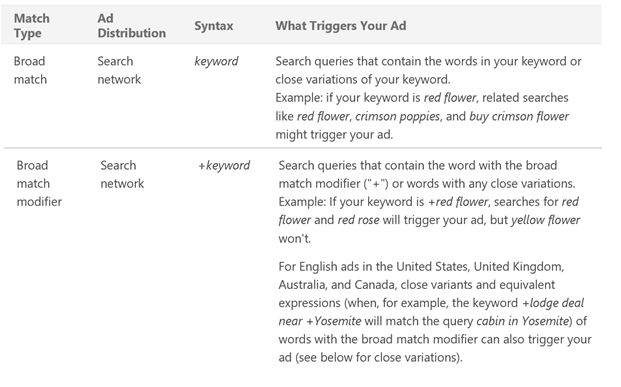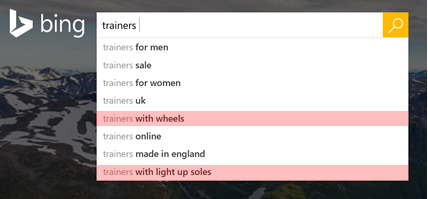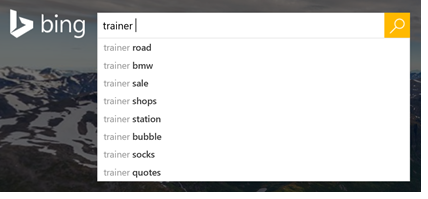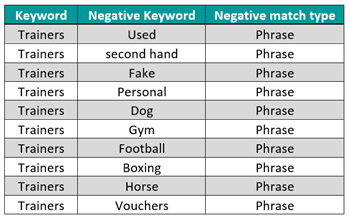Advertisers are continuously looking for ways to reach new customers and grow their businesses, but finding these customers has become more challenging.
Did you know 33% of searches on Bing are unique?
It is impossible to reach these searchers with exact match alone, especially when it comes to the much sought after long tail. This is where broad match can greatly benefit advertisers, helping to distribute messages on a wider scale. All it takes is a little time and effort to start reaping the benefits of broad! But before all that, lets remind ourselves how broad match works on Bing Ads.
A Broad Refresher
In essence there are two ways of using the match type as exampled below, which provide different levels of functionality and control.

Side note – Bing does not offer broad match negatives. However, when importing these from AdWords they’ll be added on phrase and not dropped from the import. More about this topic
Pre-launch – impact planning
The Bing Ads opportunities tab provides highly valuable insights relating to the potential of broad match for your accounts. You can quickly see the possible queries a broad match may trigger as well as suggested bids, impressions and click delivery. This can be achieved directly in the UI or via the Excel export function.

Without considering the support and direction that negative keywords provide advertisers may find that they appear for irrelevant queries. PPC practitioners should exercise post implementation planning and think about the types of terms that a broad keyword may deliver and what they would not want to appear for.
A highly informative area to start your investigation is Bing suggested searches, which shows the most popular queried variations of a search term. Typically, a point of entry when looking to build out exact keyword lists, but equally as efficient when it comes to creating negatives.
Example: a fashion brand wants to expand their advertising of trainers via broad match. They search for high level generic keywords to ascertain Bing user trends. Immediately they see two trends they believe are unlikely to deliver orders, as they do not stock these types of products.

Following on from this, the advertiser knows that Bing applies close variants to broad match. They scrutinise the keyword “trainer” to understand the associated queries. Reviewing the suggested searches, they can see queries unrelated to their products and flag them to be added as negatives.

Think logically about the types of terms that might be delivered by broad match in relation to your keywords. For example, a retailer of trainers wouldn’t want to appear for queries such as “dog trainers” and therefore they would add “dog” to their negative list. Common sense always prevails!

Building on the above, protecting your brand is of the utmost importance. Therefore, create a “stockpile” of negatives that you consider detrimental. Think about the potential risks associated to your category i.e. an airline would add negatives such as “crash” and “accident” to broad campaigns. This will ensure that you steer clear of areas that might damage reputations. Adding these terms to a campaign negative list is recommend and can be easily distributed across your account.
Once you have your negative lists built then it’s a simple case of applying these, triple checking that everything is covered, and diving feet first into the world of broad match advertising!
Post launch - A cycle of refinement
Broad matching is an exploratory practice that is used successfully by advertisers to find additional traffic and revenue for their businesses. Here at Bing we have seen advertisers achieve 70% more clicks and 56% more conversions by adding broad into their PPC arsenal. That said, it takes a lot of love and nurturing to truly get the best from your activity, however it is certainly nothing overly complex.

Report
Two options in the Bing Ads interface for reporting search terms;
Keywords tab (under details) - quick spot checks on specific campaigns/ad groups.
Reports tab (search term report) - access search queries from multiple accounts in one go.
Analyse
No “one size fits all” approach, but there are some handy tips for hassle free analysis;
Apply thresholds - filter data and make opportunities standout e.g. queries with 100 clicks or more.
Conditional formatting - combine with thresholds, spot trends that are prime for implementation.
Implement
The easiest part of the process! However, when it comes to negative keywords think about the match type (exact or phrase) that you want to apply. Using phrase negatives will help cut out multiple search queries and give greater broad control.
Repeat!
Set aside regular time to check your performance. Sounds painfully obvious, but search patterns evolve, continuously providing new opportunities to explore. A simple practice is to use scheduled reports, delivering your next opportunity directly to your inbox!
Final thoughts
Making assumptions on what exact terms consumers are going to search is no longer a viable option if PPC growth is to be achieved. To reach this evolving and lucrative audience requires something more adventurous, explorative and frictionless. Quite simply, it requires broad!